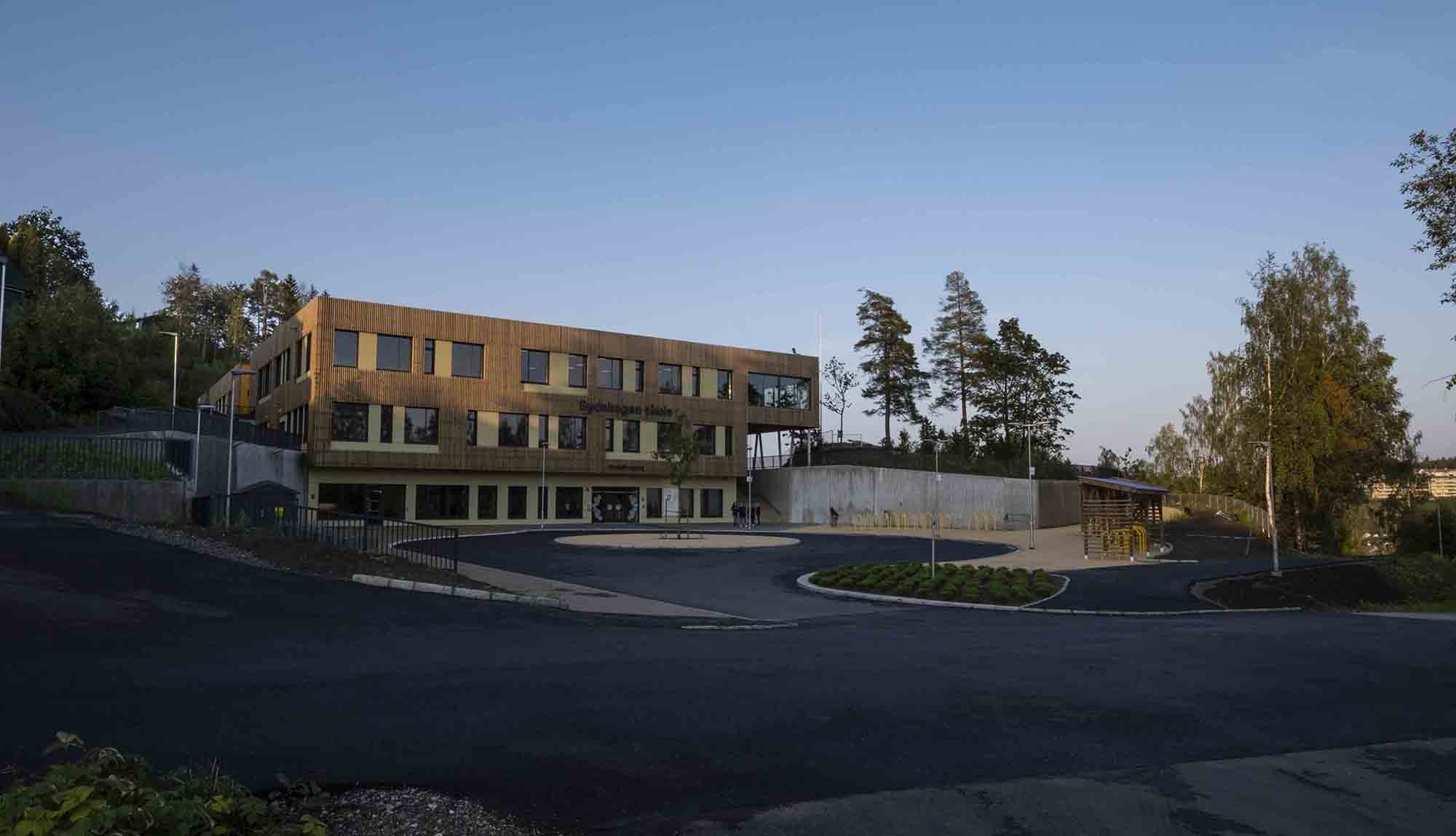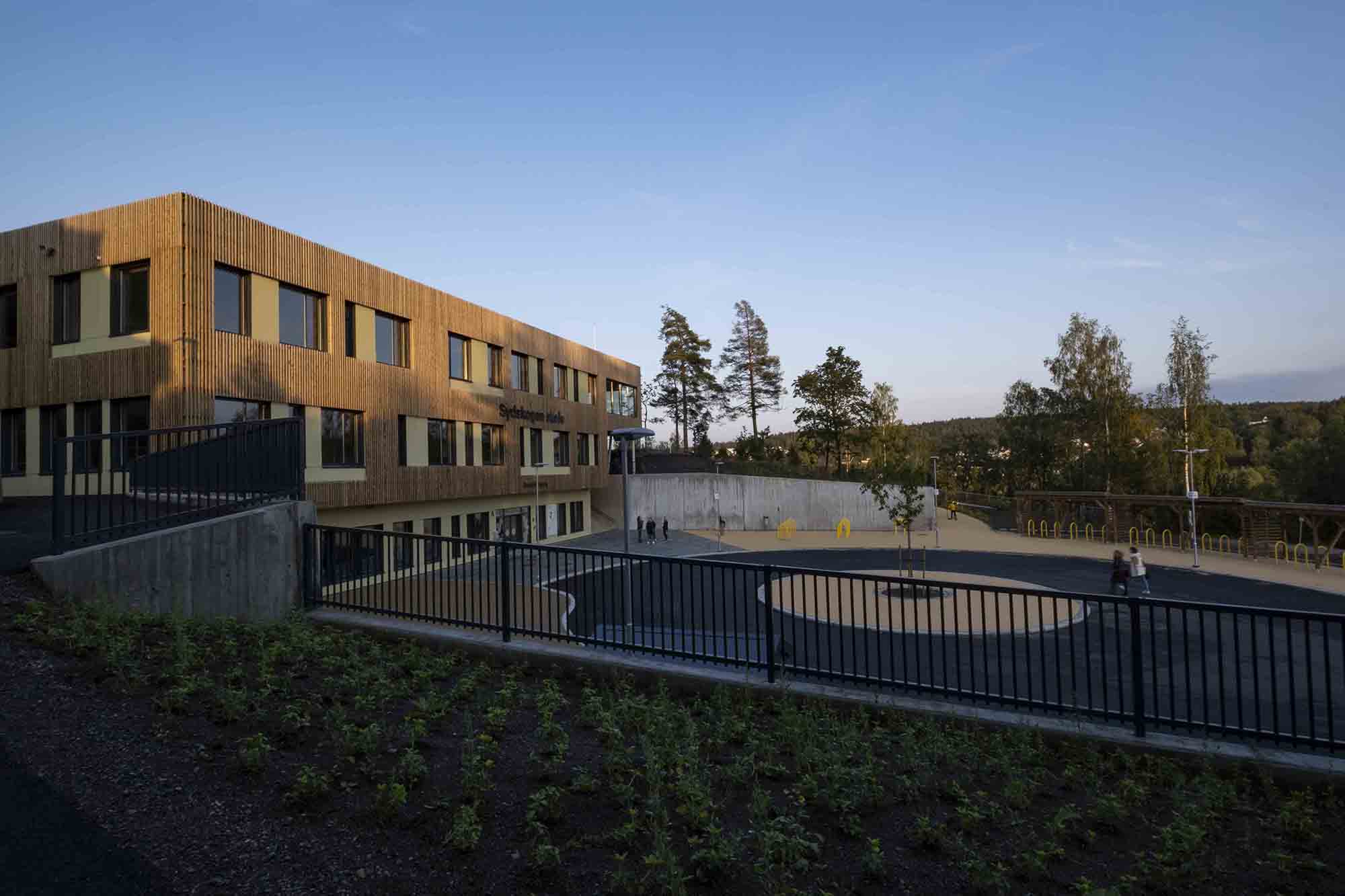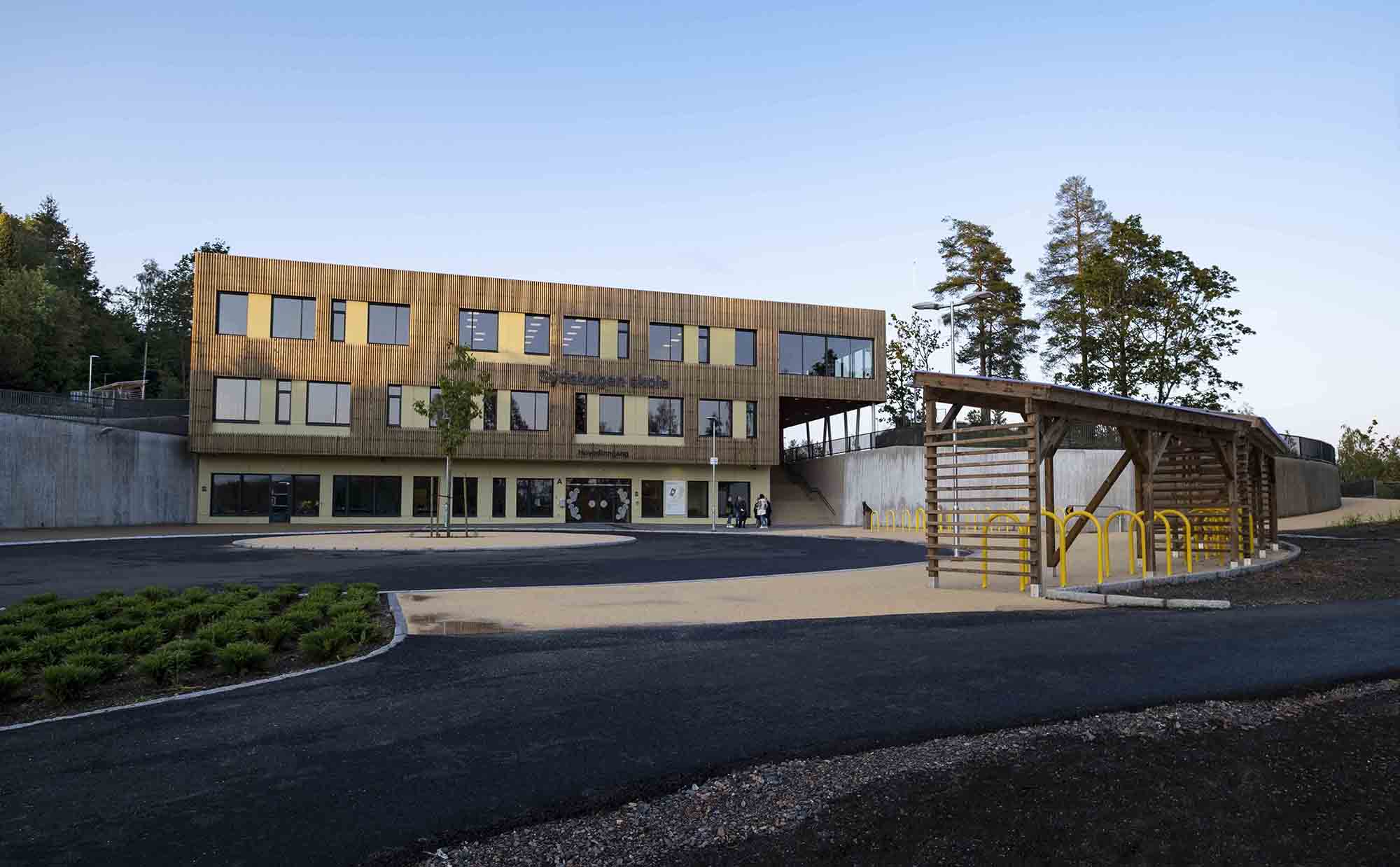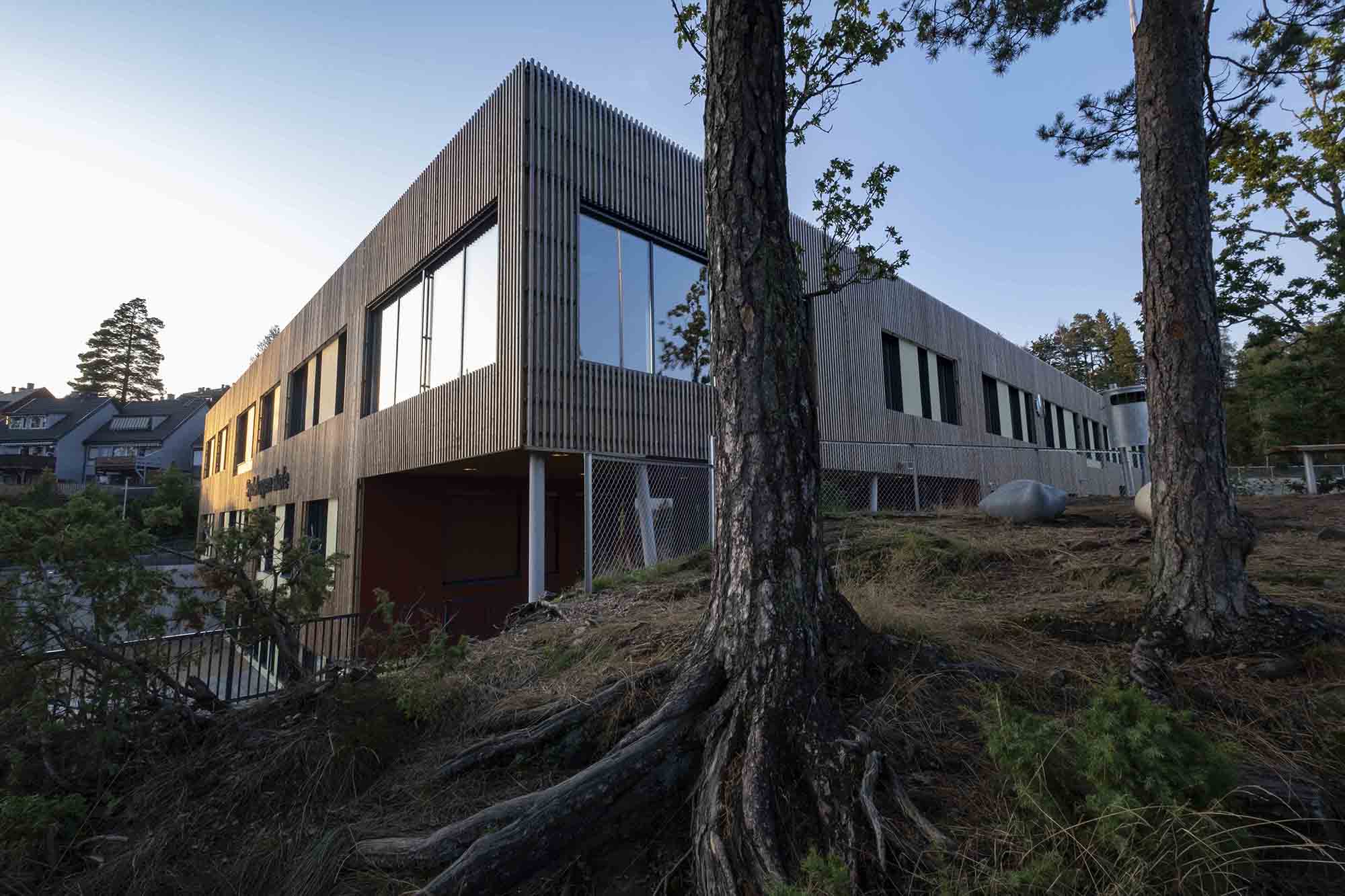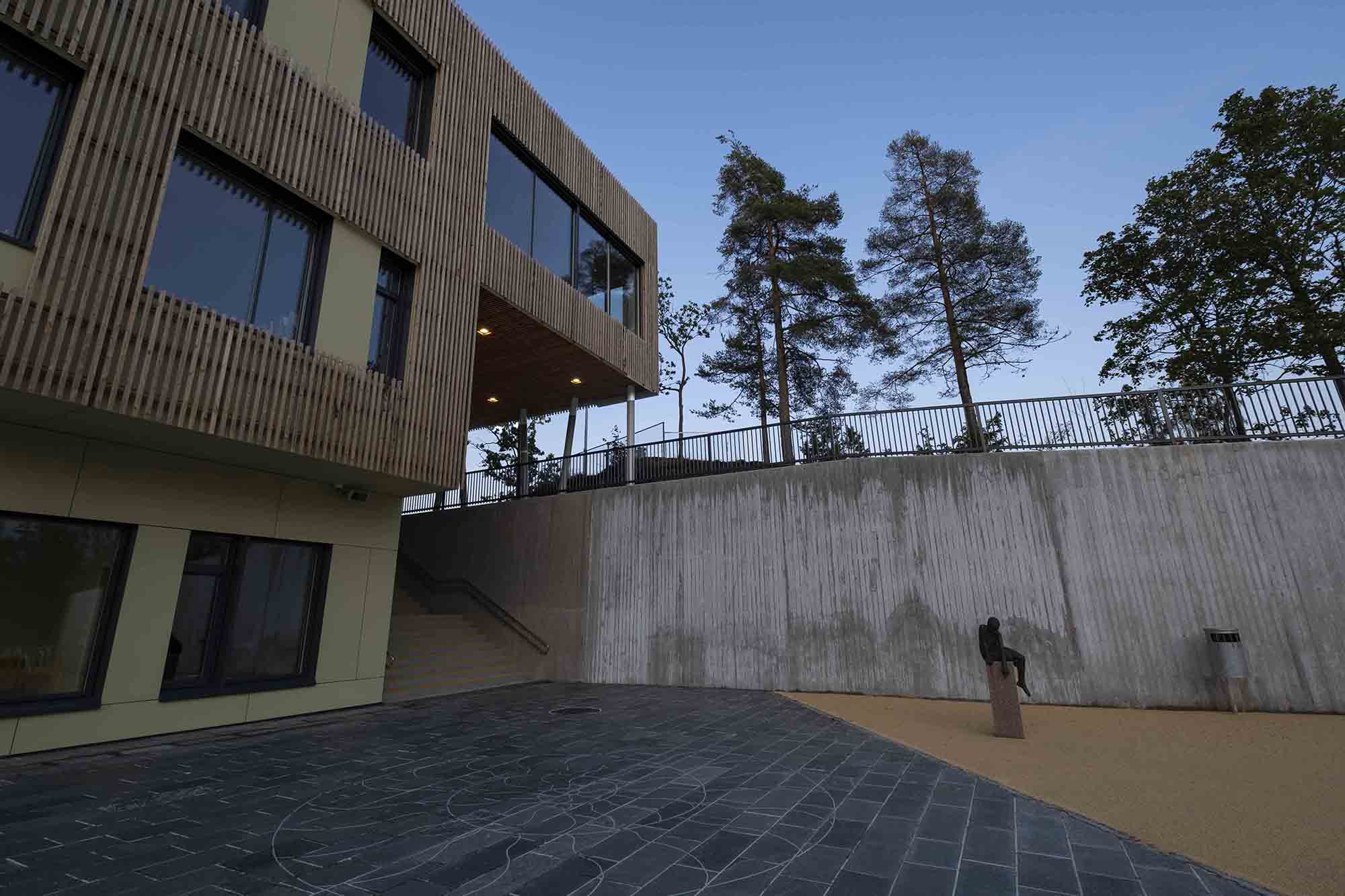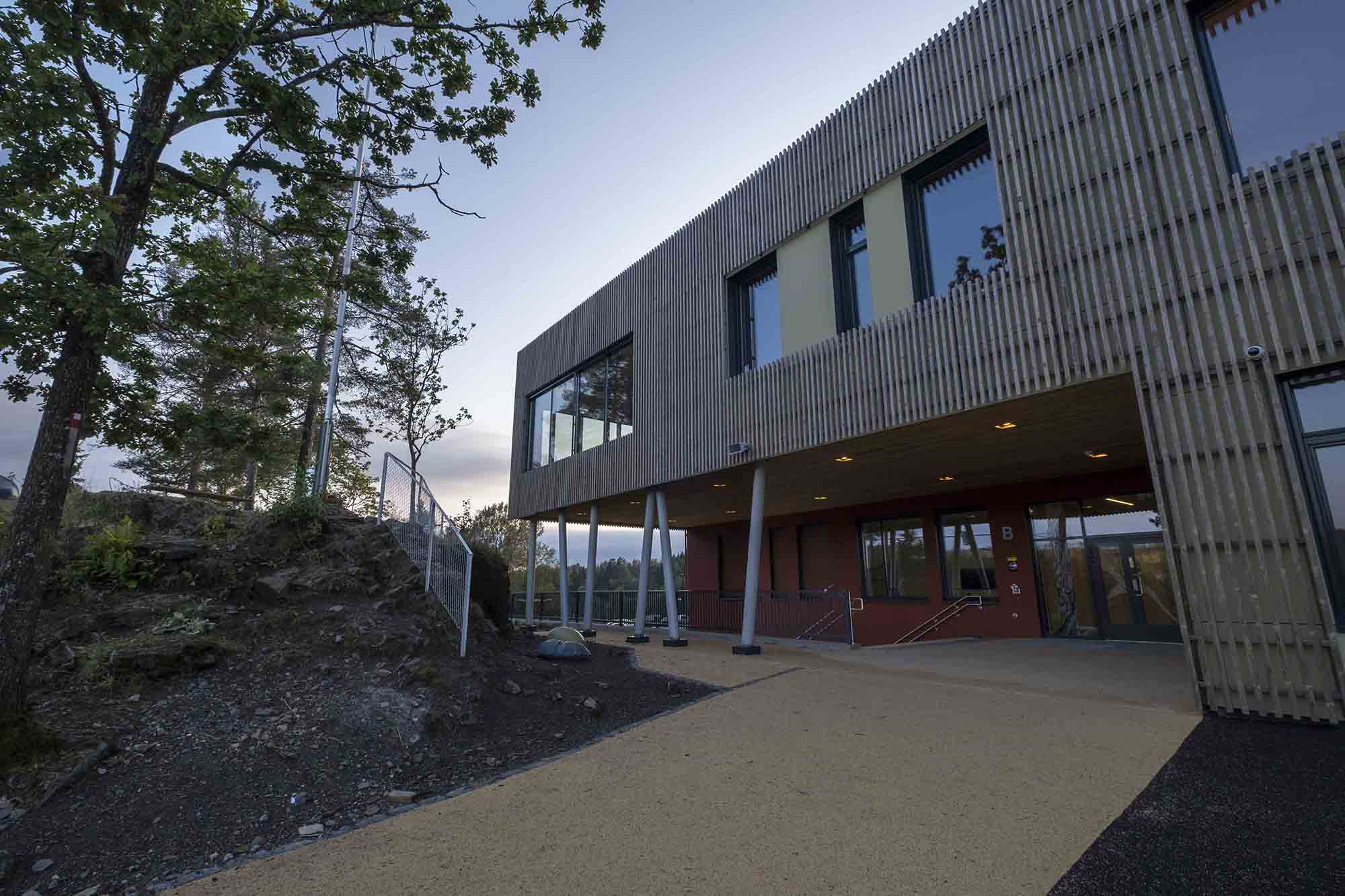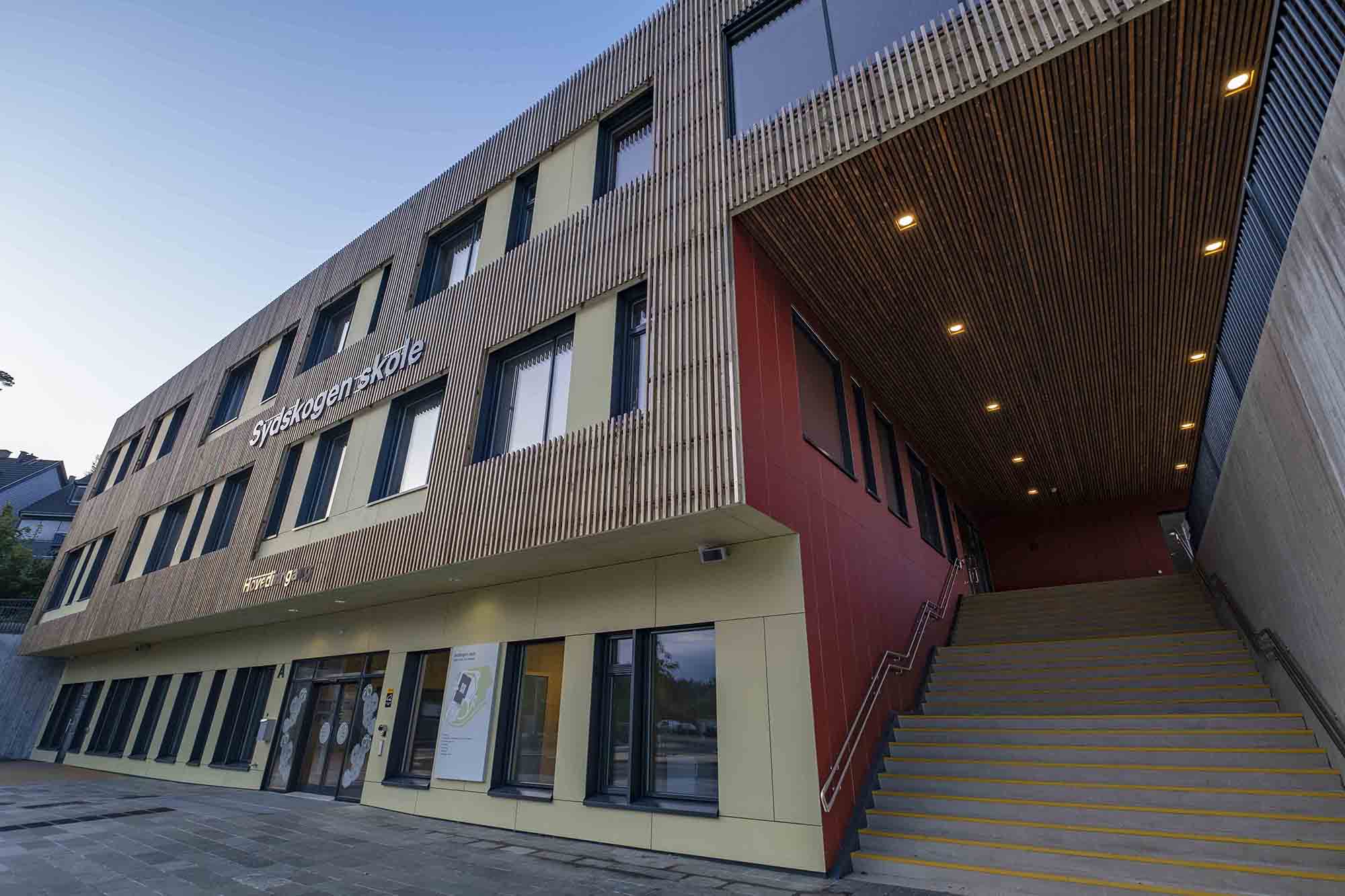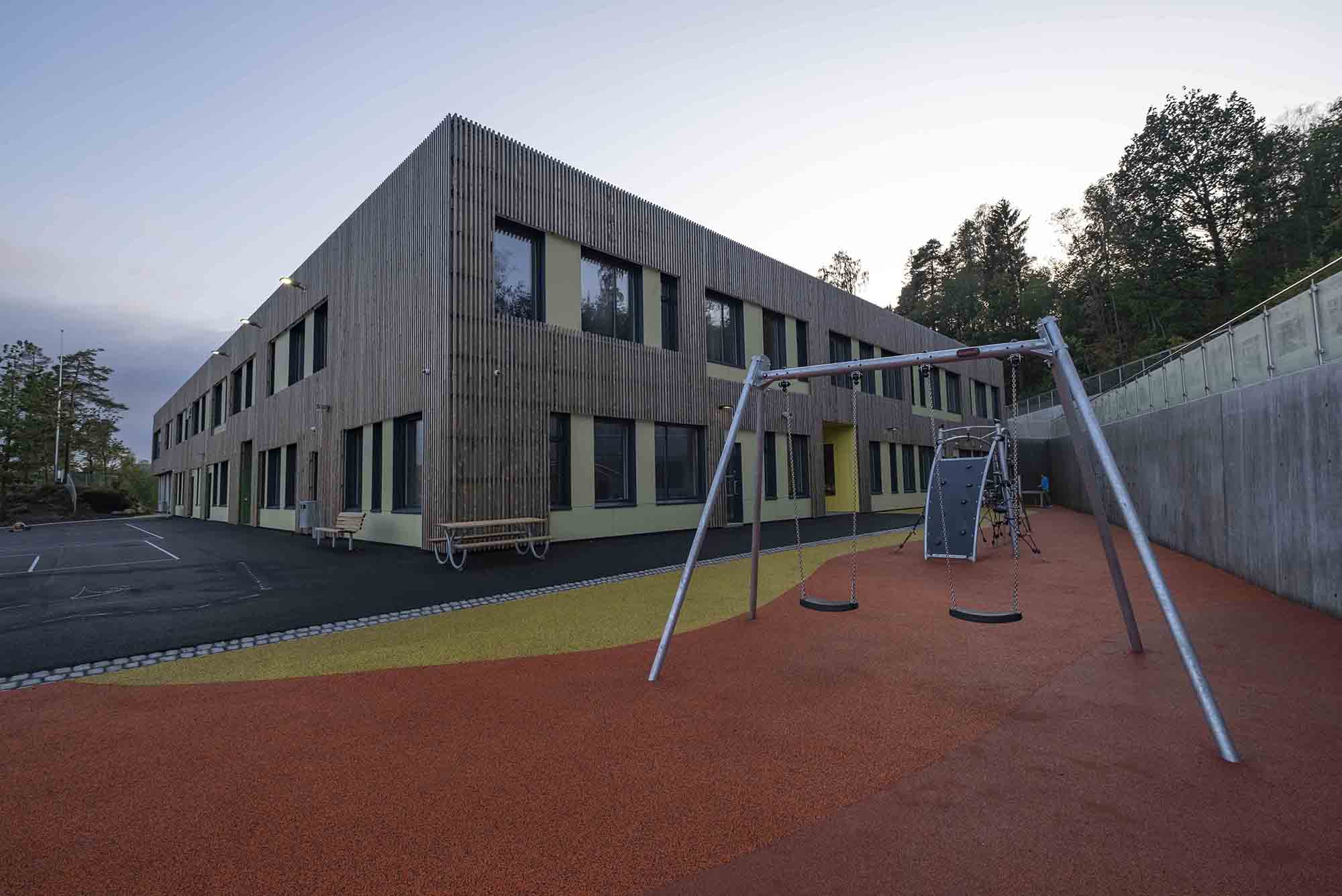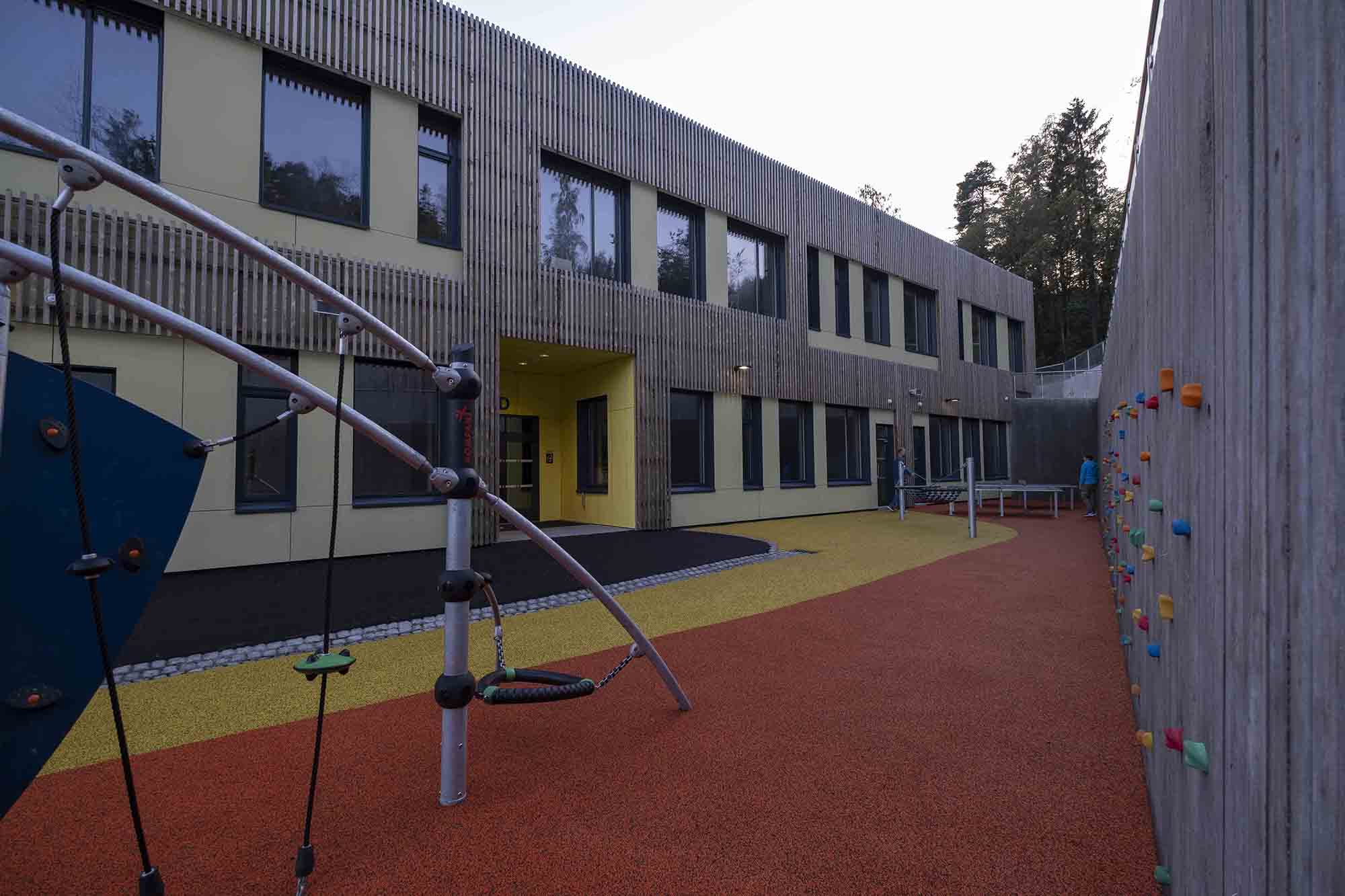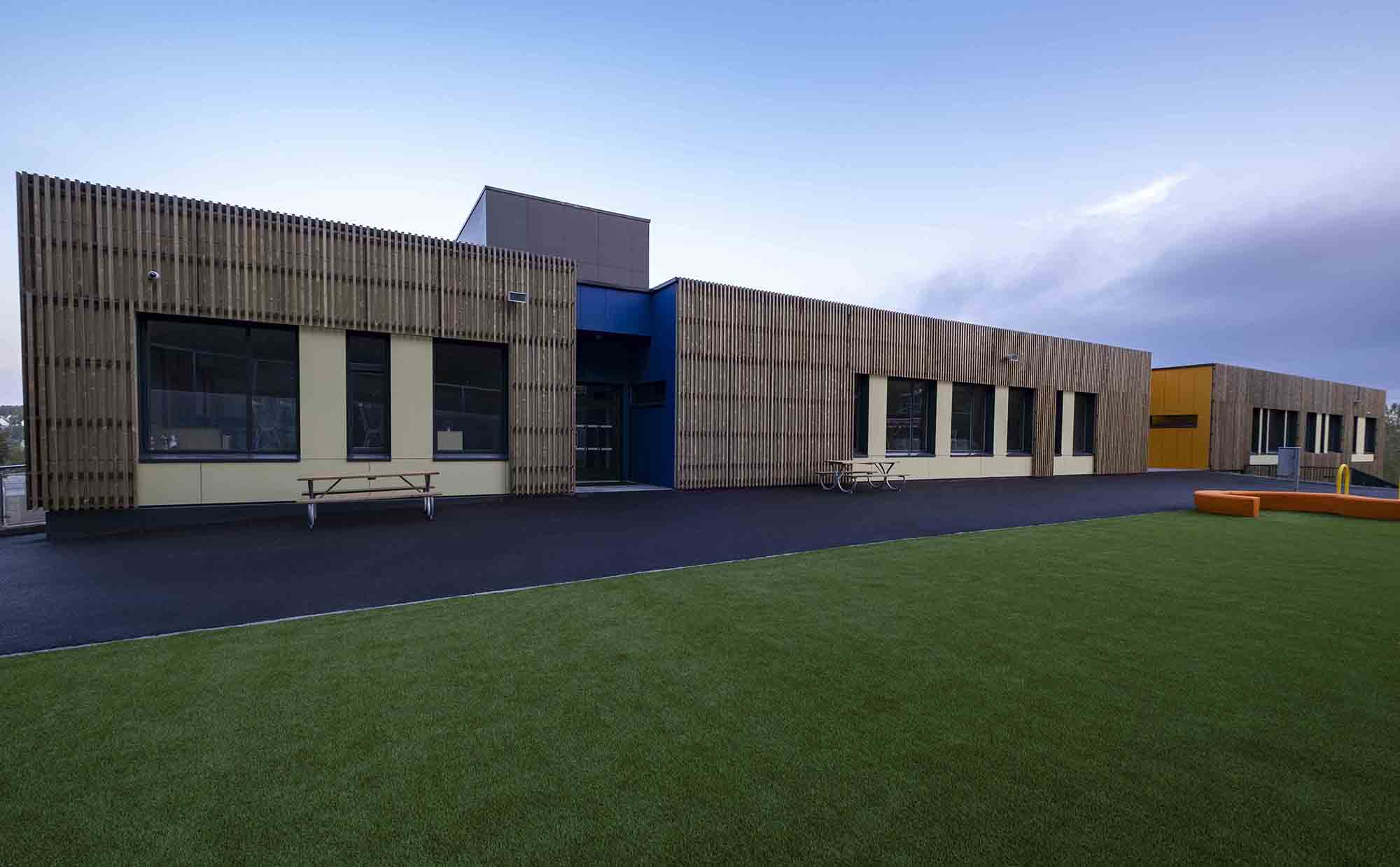Kebony was the material of choice when the first ecolabelled school in the Nordic region was to be built in Røyken on the outskirts of Oslo, Norway. The result is Sydskogen school, a great place to be – and to learn.
The official Nordic Swan Ecolabel sets tough standards. So tough that its stringent requirements for building materials exceed those of the regulatory authorities. This is why the firm contracted to build Sydskogen school had to make the right choices in materials. Kebony employs an environmental technology which provides an alternative to threatened tropical species and conventionally pressure-treated wood. This harmonises perfectly with the Nordic Swan Ecolabel’s requirement for the timber used in the building to be sustainably produced. Conserving the planet’s vital forest resources calls for a long-term approach, and Kebony is a pro-climate choice.
Nothing left to chance
There are many factors to address when building a school. You can opt to take a familiar route, or innovate. The latter was the bold choice made by building contractors Bermingrud and the architectural practice tegn_3, with the full backing of Røyken local authority. Kebony was soon in play as the preferred material for the school’s facades, on both aesthetic and practical grounds.
Inspiring colour scheme
“When we came on board, many of the other materials had already been decided on, so it was important for us to pick a colour scheme that would have lasting appeal for many years to come”, says the tegn_3 architects’ team. Wooden slat cladding and a design featuring colourful surfaces give the building a playful look, while blending in nicely with the school’s grounds and green environs. Universal design is integral to the project, where the use of colours and contrasts highlights structural features and creates both spatial variation and continuity. Intuitive wayfinding is a priority, to make it easy for occupants to get from A to B in the building.
The tegn_3 architects applied different colours to the different entrance doors to make it easy for the pupils to find their own entryway.
“The colourful details will enhance the premises as they age”, explain the architects. Kebony is a natural material that changes colour over time. Today, the new facades are brown, but they will gradually transition to Kebony’s distinctive silvery grey patina.
Ecofriendly features
Other features implemented by the contracting firm in order to meet the Nordic Ecolabel’s stringent requirements for energy performance include the installation of rooftop solar panels. Sydskogen school is what is known as a passive house, meaning that its energy requirement is 25 per cent lower than that of a conventional building. The aim was to build an ecofriendly school where the occupants thrive both indoors and outdoors.
“A sound indoor climate is particularly important for an educational institution, and to that end Kebony provides an air-permeable, natural facade. The school will house around 400 pupils and teachers, and we are confident that they will thrive in a building allied with nature”, the architects explain.
To last for years
Another key aspect in building a school is that it has to stand up to many years’ use. Meaning that compromising on quality is not an option.
“In terms of its visual appeal, the Kebony facade cladding will become even more attractive over time, but it is also a weather-resistant material that stands up well to the test of time”, the architects explain. This then sets the standard for a school that will be receiving generation after generation of schoolchildren, and we hope it will inspire other school developers to make similar ‘green’ choices.
For info: Since the completion of Sydskogen school at the start of the academic year 2019, tegn_3 has merged with Gottlieb Paludan Architects from Denmark. The new firm now operates under the name Gottlieb Paludan Architects.




